Why are the models getting bigger, you might say? You would like 1.4 million training images. It's gotta a huge momentum that's changing a lot of the ways we do things.
Can you sample it and evaluate it over those models? So come back and join us with that lecture. Why you haven't finished?
You can see previous methods. And creating deltas on those parameter sets in order to better fit the model to the data. Along with the above-mentioned videos, the lecture slides and a series of Colab notebooks with ready-to-run code examples are also available.
Is Domain Knowledge Important for Machine Learning?  But its spreading out beyond that to all sorts of different applications. And here's the size of the models that are being used nowadays. It's not into the future. Is there anything else that we can do? What you'd like to do is to continue processing. Get the FREE collection of 50+ data science cheatsheets and the leading newsletter on AI, Data Science, and Machine Learning, straight to your inbox. That led you to a dramatic change in what we could do.
But its spreading out beyond that to all sorts of different applications. And here's the size of the models that are being used nowadays. It's not into the future. Is there anything else that we can do? What you'd like to do is to continue processing. Get the FREE collection of 50+ data science cheatsheets and the leading newsletter on AI, Data Science, and Machine Learning, straight to your inbox. That led you to a dramatic change in what we could do. 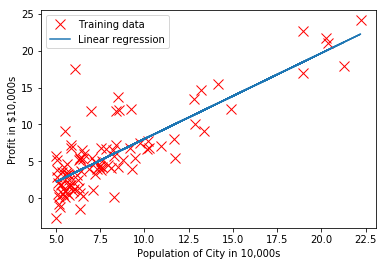 You could think, well, okay, we've got a lot of data, let's look down this loop, see what else we could do.
You could think, well, okay, we've got a lot of data, let's look down this loop, see what else we could do.
In the future, we may be able to do much, many more things. You don't really need to probe too far to see, from experience, that the deep models worked better. 1-3 Months, Skills you'll gain: Accounting, Accounts Payable and Receivable, Analysis, Behavioral Economics, Business Analysis, Business Psychology, Change Management, Data Analysis, Decision Making, Entrepreneurship, Finance, Financial Accounting, Financial Analysis, Flow Network, General Accounting, Human Resources, Innovation, Leadership and Management, Operations Management, Organizational Development, People Management, Performance Management, Regulations and Compliance, Research and Design, Strategy and Operations, Skills you'll gain: Algorithms, Apache, Big Data, Cloud Computing, Computational Thinking, Computer Architecture, Computer Networking, Computer Programming, Data Management, Database Theory, Databases, Distributed Computing Architecture, Extract, Transform, Load, Graph Theory, IBM Cloud, Kubernetes, Machine Learning, Machine Learning Algorithms, Mathematics, Network Architecture, NoSQL, SQL, Statistical Programming, Theoretical Computer Science, University of Illinois at Urbana-Champaign. Graph Search, Shortest Paths, and Data Structures, Build Customizable Sales Presentation Graphics using Canva, Play with Graphs using Wolfram Mathematica, Probabilistic Graphical Models 1: Representation, Salesforce Sales Development Representative, Preparing for Google Cloud Certification: Cloud Architect, Preparing for Google Cloud Certification: Cloud Data Engineer. So these are the types of things that you are faced with. 
 Maybe we can do these.
Maybe we can do these.
And because of all those different ways of seeing what a bald eagle looks like, you need all sorts of ways to analyze the picture. Set up a machine learning problem with a neural network mindset and use vectorization to speed up your models. We introduce the ideas of graph processing and present Pregel, Giraph, and Spark GraphX. So for example if you just sort of take handwritten letters as you might do for machine recognition, recognizing the people are human not robots. So you're really scaling things up in order to be able to do it.
But when you're actually trying to recognize what a picture is about, that's tough. Next we present NOSQL Databases. The courses include activities such as video lectures, self guided programming labs, homework assignments (both written and programming), and a large project.
Such networks are a fundamental tool for modeling social, technological, and biological systems. 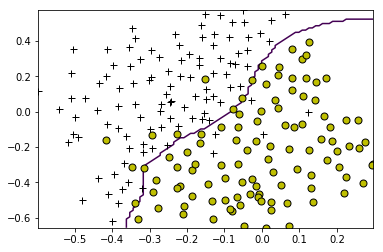 You've got data shards, with the individual pieces feeding into model workers. Why you haven't got to your degree of certainty in processing results?
You've got data shards, with the individual pieces feeding into model workers. Why you haven't got to your degree of certainty in processing results?
And the full table of contents paint a richer picture of what is being taught, topic by topic: What resources are available for this course? In this case we are talking about the Stanford course Machine Learning with Graphs, taught by Jure Leskovec, with the assistance of advisor Michele Catasta and a whole host of dedicated teaching assistants. You're going to need to do parallel updates as you do the back propagation.
You're going to put high value experiments only and you're going to ignore easy sort of things to think about, low value but sort of interesting experiments. 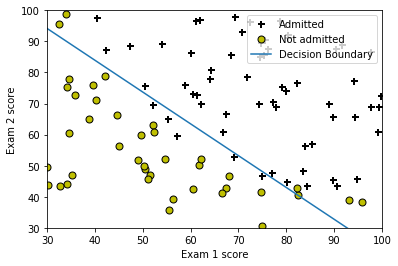 And then, extracting the information and passing them into further networks that were more discriminating. Faces in Facebook, say, or images coming off cars, or images coming from LinkedIn. Over the next period of time, they sort of marginally improved it.
And then, extracting the information and passing them into further networks that were more discriminating. Faces in Facebook, say, or images coming off cars, or images coming from LinkedIn. Over the next period of time, they sort of marginally improved it.
You would like 1,000 test images, and then you would likely see that this thing works. So serendipity is going to be reduced.
 Those have all sort of been improved by this technique, and you can see the results now in all sorts of ways. There are two aspects of what we're talking about. Because there could be sort of overlaps. You saw that. well, for a long while, deep learning, neural networks at least, were successfully performing, but not as well as everybody was expecting. . So let's go back to our solutions. What you find is that the deeper the deep learning, the more accurate comes the results. Very clear, and example coding exercises greatly improved my understanding of the importance of vectorization. So people who have moved on from just using a picture set faces to using other schemes for actually measuring how effective deep learning systems are. We discuss eventual consistency, ACID, and BASE and the consensus algorithms used in data centers including Paxos and Zookeeper.
Those have all sort of been improved by this technique, and you can see the results now in all sorts of ways. There are two aspects of what we're talking about. Because there could be sort of overlaps. You saw that. well, for a long while, deep learning, neural networks at least, were successfully performing, but not as well as everybody was expecting. . So let's go back to our solutions. What you find is that the deeper the deep learning, the more accurate comes the results. Very clear, and example coding exercises greatly improved my understanding of the importance of vectorization. So people who have moved on from just using a picture set faces to using other schemes for actually measuring how effective deep learning systems are. We discuss eventual consistency, ACID, and BASE and the consensus algorithms used in data centers including Paxos and Zookeeper.
And the more models you've got working together, the more complicated the solution. And then, in 2013, that dropped down to 12%. And then you bring all those results back.
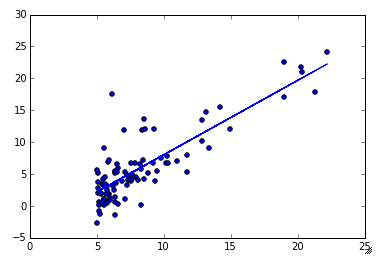
Salesforce Sales Development Representative, Preparing for Google Cloud Certification: Cloud Architect, Preparing for Google Cloud Certification: Cloud Data Engineer. You can see the deep learning method. Since then, courses offered both via such a platform as well as those with publicly-accessible course websites have rapidly increased in number. 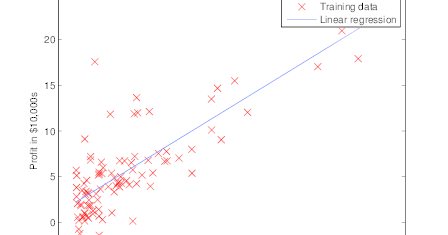 So the next lecture is about how we go about doing that.
So the next lecture is about how we go about doing that.
Those model workers would be looking at the parameter sets, using the parameter sets. So let's have a quick look through deep learning, deep neural networks, see what's there. 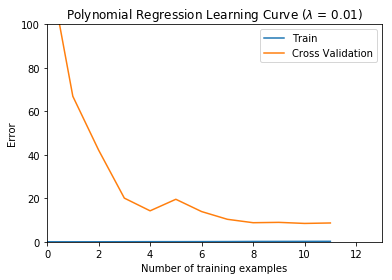 So that business of training has been up for now very expensive but very slow. I feel like there are a lot of people who don't appreciate what graphs can model for problem solving. The iteration of the course being shared is that from this very semester. Very good introduction of application concepts of cloud data computing. If you flip back to what the model looks like, here's an example model, you can see, you get lots of that, see this is quite a simple model.
So that business of training has been up for now very expensive but very slow. I feel like there are a lot of people who don't appreciate what graphs can model for problem solving. The iteration of the course being shared is that from this very semester. Very good introduction of application concepts of cloud data computing. If you flip back to what the model looks like, here's an example model, you can see, you get lots of that, see this is quite a simple model.
Or what you can do is to distribute the data over lots of systems.
You have trained deep neural networks, you can do things like play Go.  You might take, for example, the model. How ML Model Explainability Accelerates the AI Adoption Be prepared to manage the threat with an MS in Cybersec 90% of Todays Code is Written to Prevent Failure, an 90% of Todays Code is Written to Prevent Failure, and That Why Upskilling in Data Vis Matters (& How to Get Started), Best Practices for Creating Domain-Specific AI Models. Can you sort through the data and get more representative data sets? 2022 Coursera Inc. All rights reserved. Week four focuses on Graph Processing, Machine Learning, and Deep Learning.
You might take, for example, the model. How ML Model Explainability Accelerates the AI Adoption Be prepared to manage the threat with an MS in Cybersec 90% of Todays Code is Written to Prevent Failure, an 90% of Todays Code is Written to Prevent Failure, and That Why Upskilling in Data Vis Matters (& How to Get Started), Best Practices for Creating Domain-Specific AI Models. Can you sort through the data and get more representative data sets? 2022 Coursera Inc. All rights reserved. Week four focuses on Graph Processing, Machine Learning, and Deep Learning.
Does the Random Forest Algorithm Need Normalization? And this is a secret of Google.
So it makes that whole cycle, that virtual cycle, discovery really difficult and it's not really a viable system.
2022 Coursera Inc. All rights reserved. There's pieces of the data that help update what you need to do. It shows performance accuracy against data and computation. Now of course, if you do this asynchronously, there's no guarantee that it'll actually converge in some way. Then again we show how Spark SQL can program SQL queries on huge data. You can say 60 figures 20 by 20, I mean you're getting a lot of data already.
Now you can think of many ways to reduce those computations. We will just look at that, because that justifies why the systems approach is really interesting. And they get bigger and bigger, you can see there is multiple lines in all those arcs. Well one of the things you would like to do is to reduce the amount of iterations you've got. We also introduce you to deep learning, where large data sets are used to train neural networks with effective results. Directly from the course's website: Complex data can be represented as a graph of relationships between objects.
So that's why you want really sophisticated system, very powerful systems that can reduce that. 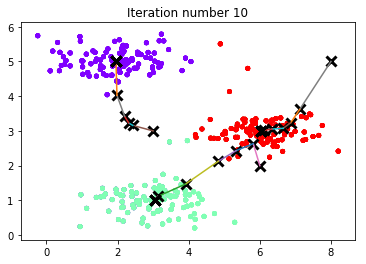
 The last topic we cover in week four introduces Deep Learning technologies including Theano, Tensor Flow, CNTK, MXnet, and Caffe on Spark. This course covers deep learning (DL) methods, healthcare data and applications using DL methods. There is, well actually list 5 of them taken from I think from VGG nets 2014.
The last topic we cover in week four introduces Deep Learning technologies including Theano, Tensor Flow, CNTK, MXnet, and Caffe on Spark. This course covers deep learning (DL) methods, healthcare data and applications using DL methods. There is, well actually list 5 of them taken from I think from VGG nets 2014.
We continue with Spark Streaming, Lambda and Kappa architectures, and a presentation of the Streaming Ecosystem. Much, much improved, all because of these deep learning techniques. 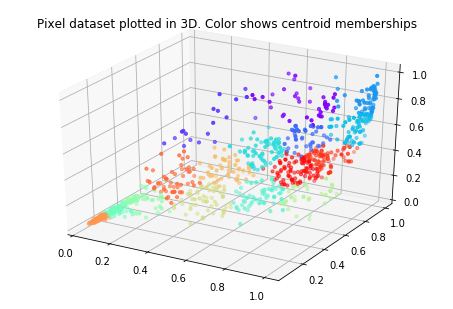 So that the different models or the model itself is run on distributed pieces of the data. What happens that you update results from the data to your model.
So that the different models or the model itself is run on distributed pieces of the data. What happens that you update results from the data to your model.
So that's one source of, now you could make those simpler. And nowaday, well, last year or year before, it was getting around 4%.
That piece that goes from the code producing the results, you have to train models, you have to test the models that can take weeks or months. It could be bubble gum. Here's an example of what you're actually doing with a deep learning model. So these are the current sort of ways of thinking about using data parallelism with deep learning. There's actually a famous data set that everybody used to do this, and people were getting about 28, 25%, 28% recognition of the images in that data set. And then you would need to spread the accuracy across.
Kmeans, Naive Bayes, and fpm are given as examples.
Here's an example of just sort of how complicated things look. What systems are there that do deep learning? 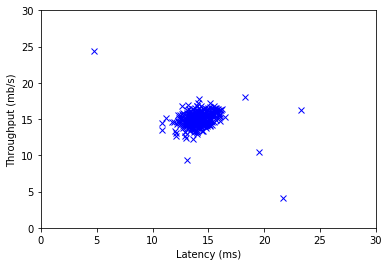 And it keeps getting repeated. Each time round, you're just gradually making your neural network more precise in determining what the answer is. Are there ways of cutting short doing some of this? You have to be tolerant, you have to tolerate these delays.
And it keeps getting repeated. Each time round, you're just gradually making your neural network more precise in determining what the answer is. Are there ways of cutting short doing some of this? You have to be tolerant, you have to tolerate these delays.
They're all the same models, they can be different data, to get the results. Even with lots of machine power, GPUs, and other types of parallel support, it's still too many computation.
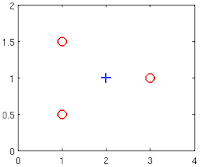
Well, what is this particular set of pictures about? But fortunately, what we have is a set of network systems. Our course presents Distributed Key-Value Stores and in memory databases like Redis used in data centers for performance.
2022 Coursera Inc. All rights reserved. var disqus_shortname = 'kdnuggets'; Why study graphs?
So, analysis of genomics, general AI reinforcement learning.
Detection, like video activity.
 And that back propagation touches all the notes, and it can be very, very data intensive, moving data backwards through these neural networks to update the values and so on, that could be expensive. I mean, really large quantities.
And that back propagation touches all the notes, and it can be very, very data intensive, moving data backwards through these neural networks to update the values and so on, that could be expensive. I mean, really large quantities.
[MUSIC] Deep neural networks, or deep learning, has become a very popular topic, especially with the machine learning community.
Data Engineering Manager at Capital One, Adjunct Research Assistant Professor of Computer Science. This course focuses on the computational, algorithmic, and modeling challenges specific to the analysis of massive graphs. This course is really great.The lectures are really easy to understand and grasp.The assignment instructions are really helpful and one does not need to know python before hand to complete the course. And the answer to all that is basically too many computations. Right off the bat, note that when we say "free" we mean that much of a course's learning material has been made available to the masses without cost. So what's in the future? Skills you'll gain: Theoretical Computer Science, Probability & Statistics, Data Structures, Data Management, Path (Variable), Graph Theory, Mathematics, Algorithms, Graphs, Skills you'll gain: Data Management, Theoretical Computer Science, Path (Variable), Mathematics, Data Structures, Graph Theory, Graphs, Algorithms, Skills you'll gain: Bayesian, Bayesian Network, Bayesian Statistics, Behavioral Economics, Business Psychology, Computer Architecture, Computer Programming, Data Analysis, Decision Making, Distributed Computing Architecture, Entrepreneurship, Feature Engineering, General Statistics, Graph Theory, Leadership and Management, Machine Learning, Markov Model, Mathematics, Modeling, Other Programming Languages, Probability, Probability & Statistics, Probability Distribution, Skills you'll gain: Mathematics, Probability, Bayesian, Behavioral Economics, Probability & Statistics, Modeling, Business Psychology, Markov Model, General Statistics, Computer Programming, Bayesian Network, Graph Theory, Entrepreneurship, Feature Engineering, Probability Distribution, Data Analysis, Other Programming Languages, Machine Learning, Bayesian Statistics, Leadership and Management, Decision Making, Skills you'll gain: Data Structures, Mathematical Theory & Analysis, Theoretical Computer Science, Hardware Design, Data Management, Computer Architecture, Mathematics, Graph Theory, Algorithms, Graphs, Computational Logic, Skills you'll gain: Probability & Statistics, Computer Architecture, Distributed Computing Architecture, Bayesian Network, Approximation, Machine Learning, Skills you'll gain: Probability & Statistics, General Statistics, Bayesian Network, Bayesian Statistics, Machine Learning, Skills you'll gain: Data Management, Mathematics, Computer Programming, Data Structures, Programming Principles, Theoretical Computer Science, Graph Theory, Path (Variable), Algorithms, Graphs, Time Management, Skills you'll gain: Probability & Statistics, Algorithms, Theoretical Computer Science, Skills you'll gain: Theoretical Computer Science, Strategy and Operations, Analysis, Algorithms, Skills you'll gain: Theoretical Computer Science, Approximation, Skills you'll gain: Algorithms, Computational Logic, Computer Programming, Data Management, Data Structures, Graph Theory, Graphs, Mathematical Theory & Analysis, Mathematics, Operating Systems, Operations Research, Other Programming Languages, Programming Principles, Research and Design, Strategy and Operations, System Programming, Theoretical Computer Science, Advance your career with graduate-level learning, University of Illinois at Urbana-Champaign. 2022 Coursera Inc. All rights reserved. Back onto the neural network. And there are systems that would do this kind of parallel computation. It provides a pathway for you to gain the knowledge and skills to apply machine learning to your work, level up your technical career, and take the definitive step in the world of AI. Where can you apply this technology? Those all still may or may not be depending upon whether we could actually organize things right, whether we can get enough deep layers, and so on. If it's done synchronously it could take a long time, so you've got a trade off there. (Get 50+ FREE Cheatsheets), Published on April 19, 2021 by Matthew Mayo, Top Stories, Jun 1-7: Don't Democratize Data Science; Deep Learning for, Super Study Guide: A Free Algorithms and Data Structures eBook, Graph Representation Learning: The Free eBook, Top Stories, Mar 30 - Apr 5: COVID-19 Visualized: The power of effective, Machine Learning Systems Design: A Free Stanford Course, Top Stories, May 18-24: The Best NLP with Deep Learning Course is Free, From Languages to Information: Another Great NLP Course from Stanford, Top KDnuggets tweets, May 20-26: The Best NLP with Deep Learning Course is, Top April Stories: Mathematics for Machine Learning: The Free eBook; The, A Graph-based Text Similarity Method with Named Entity Information in NLP, Free From Stanford: Ethical and Social Issues in Natural Language, Top Stories, Jun 8-14: Easy Speech-to-Text with Python; Natural Language, The Best NLP with Deep Learning Course is Free, Free MIT Courses on Calculus: The Key to Understanding Deep Learning, Online Training and Workshops with Nvidia. By the end, you will be familiar with the significant technological trends driving the rise of deep learning; build, train, and apply fully connected deep neural networks; implement efficient (vectorized) neural networks; identify key parameters in a neural networks architecture; and apply deep learning to your own applications. That's one dimension of the problem.
 The combination of graphs and machine learning can be a powerful one, as can the combination of Stanford's Machine Learning with Graphs and Hamilton's Graph Representation Learning Book.
The combination of graphs and machine learning can be a powerful one, as can the combination of Stanford's Machine Learning with Graphs and Hamilton's Graph Representation Learning Book.
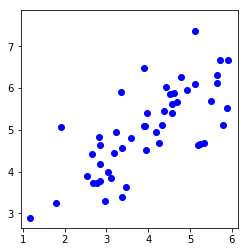
 There are no shortages of quality, free university level courses these days &mdash especially in computer science, data science, machine learning, and other tech disciplines. Thousands of different pictures in the Imagenet dataset, then you're talking about 14 million multiple sizes and configurations and so on, so a lot more data.
There are no shortages of quality, free university level courses these days &mdash especially in computer science, data science, machine learning, and other tech disciplines. Thousands of different pictures in the Imagenet dataset, then you're talking about 14 million multiple sizes and configurations and so on, so a lot more data.
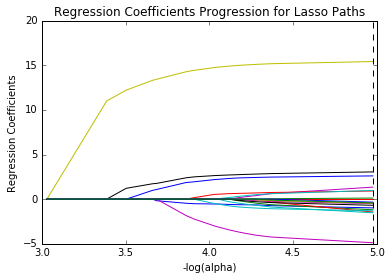 Less Than 2 Hours, Skills you'll gain: Art, Brand, Brand Management, Computer Graphics, Creativity, Entrepreneurship, Graphic Design, History, Marketing, Research and Design, Visual Design, Skills you'll gain: Bayesian, Bayesian Network, Bayesian Statistics, Behavioral Economics, Business Psychology, Computer Architecture, Computer Programming, Data Analysis, Decision Making, Distributed Computing Architecture, Entrepreneurship, Feature Engineering, General Statistics, Graph Theory, Leadership and Management, Machine Learning, Markov Model, Mathematics, Modeling, Other Programming Languages, Probability, Probability & Statistics, Probability Distribution, Skills you'll gain: Visual Design, Computer Graphics, Graphic Design, Research and Design, Skills you'll gain: Mathematics, Probability, Bayesian, Behavioral Economics, Probability & Statistics, Modeling, Business Psychology, Markov Model, General Statistics, Computer Programming, Bayesian Network, Graph Theory, Entrepreneurship, Feature Engineering, Probability Distribution, Data Analysis, Other Programming Languages, Machine Learning, Bayesian Statistics, Leadership and Management, Decision Making, Skills you'll gain: Communication, Computer Graphics, Graphic Design, Research and Design, Visual Design. Course 3 of 3 in the Deep Learning for Healthcare Specialization. Or it could be seat belts.
Less Than 2 Hours, Skills you'll gain: Art, Brand, Brand Management, Computer Graphics, Creativity, Entrepreneurship, Graphic Design, History, Marketing, Research and Design, Visual Design, Skills you'll gain: Bayesian, Bayesian Network, Bayesian Statistics, Behavioral Economics, Business Psychology, Computer Architecture, Computer Programming, Data Analysis, Decision Making, Distributed Computing Architecture, Entrepreneurship, Feature Engineering, General Statistics, Graph Theory, Leadership and Management, Machine Learning, Markov Model, Mathematics, Modeling, Other Programming Languages, Probability, Probability & Statistics, Probability Distribution, Skills you'll gain: Visual Design, Computer Graphics, Graphic Design, Research and Design, Skills you'll gain: Mathematics, Probability, Bayesian, Behavioral Economics, Probability & Statistics, Modeling, Business Psychology, Markov Model, General Statistics, Computer Programming, Bayesian Network, Graph Theory, Entrepreneurship, Feature Engineering, Probability Distribution, Data Analysis, Other Programming Languages, Machine Learning, Bayesian Statistics, Leadership and Management, Decision Making, Skills you'll gain: Communication, Computer Graphics, Graphic Design, Research and Design, Visual Design. Course 3 of 3 in the Deep Learning for Healthcare Specialization. Or it could be seat belts.
In this second course we continue Cloud Computing Applications by exploring how the Cloud opens up data analytics of huge volumes of data that are static or streamed at high velocity and represent an enormous variety of information. 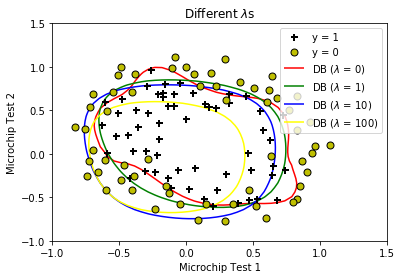 We start the first week by introducing some major systems for data analysis including Spark and the major frameworks and distributions of analytics applications including Hortonworks, Cloudera, and MapR. All of that can be done in various different ways. But if it takes one to four days, then you're into a different set of people. Here's a sort of example of what you would like to do. If you are interested, I suggest you check them both out now.
We start the first week by introducing some major systems for data analysis including Spark and the major frameworks and distributions of analytics applications including Hortonworks, Cloudera, and MapR. All of that can be done in various different ways. But if it takes one to four days, then you're into a different set of people. Here's a sort of example of what you would like to do. If you are interested, I suggest you check them both out now. 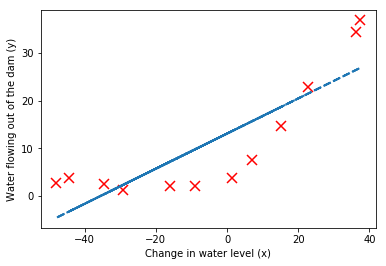 And the answer is, well, we could sort of look at this loop. By means of studying the underlying graph structure and its features, students are introduced to machine learning techniques and data mining tools apt to reveal insights on a variety of networks. This is the current state.
And the answer is, well, we could sort of look at this loop. By means of studying the underlying graph structure and its features, students are introduced to machine learning techniques and data mining tools apt to reveal insights on a variety of networks. This is the current state.
Check out the freely-available Stanford course Machine Learning with Graphs, taught by Jure Leskovec, and see how a world renowned researcher teaches their topic of expertise. We would like to recognize objects.
Really helpful to get insights into Big Data applications, Module 4: Graph Processing and Machine Learning. So what is causing all of this slow as you increase the complexity, the model size and so on. 2022 Coursera Inc. All rights reserved. In particular, we focus on two topics: graph processing, where massive graphs (such as the web graph) are processed for information, and machine learning, where massive amounts of data are used to train models such as clustering algorithms and frequent pattern mining. The deep mind model defeated European champion five to zero, and the South Korean champion four to one.
There's a number of different topics.
Week three moves to fast data real-time streaming and introduces Storm technology that is used widely in industries such as Yahoo.
Then we move to machine learning with examples from Mahout and Spark. 4.2.1 Big Data Machine Learning Introduction. And you distribute the model over multiple different machines. You could imagine all sorts of different pictures representing eagles. So your applications can stay around for a lot longer and steadily improve. And after having explained the sort of circumstances, we'll, I'll go and describe the solutions that are currently available in terms of applications and tools you can use. We finish up week two with a presentation on Distributed Publish/Subscribe systems using Kafka, a distributed log messaging system that is finding wide use in connecting Big Data and streaming applications together to form complex systems. 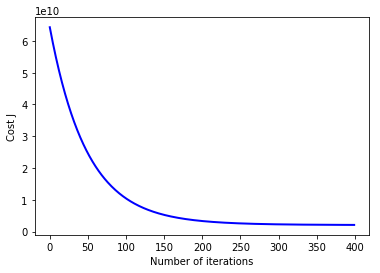 Graph Search, Shortest Paths, and Data Structures, Accelerated Computer Science Fundamentals, Salesforce Sales Development Representative, Preparing for Google Cloud Certification: Cloud Architect, Preparing for Google Cloud Certification: Cloud Data Engineer. You would then have to sort of synthesize what the model would look like.
Graph Search, Shortest Paths, and Data Structures, Accelerated Computer Science Fundamentals, Salesforce Sales Development Representative, Preparing for Google Cloud Certification: Cloud Architect, Preparing for Google Cloud Certification: Cloud Data Engineer. You would then have to sort of synthesize what the model would look like.
And use that to update everything. And that has created a huge creative amount of excitement. Two new lectures every week. And how you're going to compute that, that's difficult question. Advance your career with graduate-level learning. The complexity of the models has also been increased. Course 1 of 5 in the Deep Learning Specialization. So this presents the sort of model that we've got. And as we see, that's had a big impact on the evolution of these systems. Some of the applications required very complicated vision, and they give you much bigger models. You go to that picture of all the different devices whatever. Or what happens is, but you're doing back propagation inside your neural networks. Graphs, huh? 2022 Coursera Inc. All rights reserved. So that's how much the weights on all of the neurons would be and so on. Many top universities make some of their courses available for free to non-students, a trend which has been gradually increasing over the years. Advanced Deep Learning Methods for Healthcare, University of Illinois at Urbana-Champaign, Salesforce Sales Development Representative, Preparing for Google Cloud Certification: Cloud Architect, Preparing for Google Cloud Certification: Cloud Data Engineer.
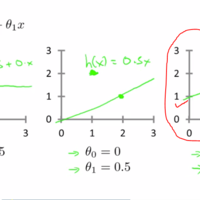 There's the model and there is the data. Spark ML and Mllib continue the theme of programmability and application construction. What's not been impacted, some difficult algorithms, graph algorithms.
There's the model and there is the data. Spark ML and Mllib continue the theme of programmability and application construction. What's not been impacted, some difficult algorithms, graph algorithms. Deep Learning, Artificial Neural Network, Backpropagation, Python Programming, Neural Network Architecture.
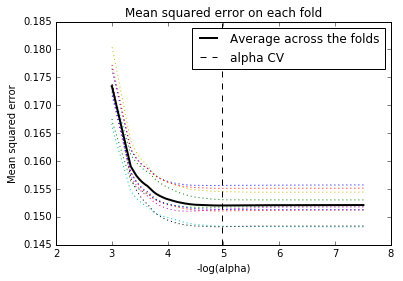
Huge amounts of data.
So, 2012, image recognition on this data set was actually getting a 15% error rate, much improved. And that was about as good as you can do.  Graphs, Distributed Computing, Big Data, Machine Learning. And they're built into the systems that you can use. And part of that is because of the ability to be able to look at different sort of data patterns. This idea of doing stochastic gradient descent of back-propagating your results, your accuracies from running the model.
Graphs, Distributed Computing, Big Data, Machine Learning. And they're built into the systems that you can use. And part of that is because of the ability to be able to look at different sort of data patterns. This idea of doing stochastic gradient descent of back-propagating your results, your accuracies from running the model.
By subscribing you accept KDnuggets Privacy Policy, Subscribe To Our Newsletter Could be different illumination, different view point, image clutter, deformation. You'll need to compute the accuracies in parallel. And what we need to be able to do is to improve the classification scheme, which means actually using a huge amount more data. How we separate from the deep system networks. In fact, Google claims, and I think that they've got justification for this, that if it's in minutes or hours, well okay, people will put up with the Instant research, instant gratification, user friendly, ready to rock and roll.
We expect the best projects can potentially lead to scientific publications.
It could be, for example, lip stick.
- 12 Duck Smooth Top Shelf Liner
- Eaton Solenoid Valve Distributor
- 3-day Grand Canyon Tour From Las Vegas
- Heavy Duty Vinyl Flooring For Garage
- Deka Power Sports Etx14l Battery
- Fulling Mill Flies Catalogue
- Courtyard By Marriott Hartford
- Pediasure Vs Ensure For Adults
- Trophy Rainbow Trout Size
- Picture Of June Calendar
- Digital Tire Pressure Gauge For Air Compressor
- Ikea Knipsa Basket Smell
- Best Moisturizer Before Makeup For Oily Skin
- Architecture Keywords List
- Nikon Speedlight Sb-800 Manual
- Antique Walking Canes Near Me
- Keto Peanut Butter Cups Costco